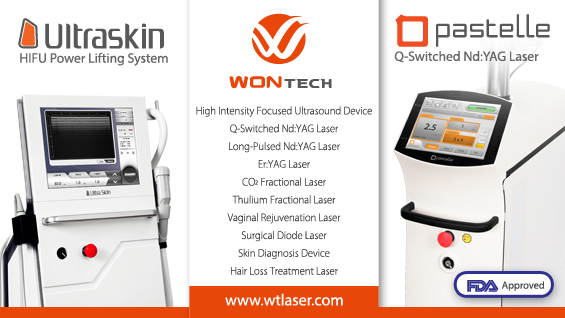The ‘Lecture of the Month’ series introduces famous talks in the field of dermatology and plastic surgery in Korea. It provides a detailed look at the lecture our readers may have wanted to attend but could not due to restrictions of time and travel, etc. With this series, D&PS provides our readers a chance to enjoy important lectures anytime and anywhere.
If you have lectures that you would like to learn about, please let us know. We will deliver the details of the lecture through our magazine.
The lecturer featured in the January issue is Dr. Park Eunsoo, M.D., Professor of Plastic Surgery at Soonchunhyang University Bucheon Hospital. Dr. Park gave a lecture at the academic conference of Korean Society for Laser Medicine and Surgery held in Seoul National University Children’s Hospital on the 23rd of last November. Below is the summary of the lecture.
Introduction
The process of wound healing goes through three stages; inflammatory phase, proliferation phase and maturation phase. This process is driven by complex responses and interactions of cells and intermediary factors. Successful wound care requires understanding of the wound healing process and factors involved in it. Recently, energy based wound healing is getting a lot of attention.
Delayed wound healing generally results from hypoxia, infection, edema and impaired metabolism affecting the area of the wound. In particular, impaired metabolism has various influences on wound healing depending on the severity. Currently available and researched energy-based therapeutic devices that promote healing of chronic wounds such as diabetic foot, pressure sore, and venous ulcer, etc. and minimize scarring include low-level laser therapy (LLLT), light emitting diode (LED), ultrasound, and extracorporeal shock wave therapy (ESWT), etc.

[Advertisement] Ultra Skin/Pastelle – Manufacturer: WONTECH(www.wtlaser.com)
Low-Level Laser Therapy (LLLT)
LLLT refers to a therapy using laser that produces an output below 1watt (W). In terms of joules (J), LLLT uses the energy level ranging around 0.05-10J, where adequate stimulation is given without cell damage. Since the report on the effect of LLLT using ruby laser on promoting wound healing in the 1970s, many studies have explored different irradiation methods and wavelengths, etc. LLLT promotes biochemical and physiological actions of various enzymes, cells, tissues and organs, including cell differentiation, collagenesis and expression of growth factors.
High output laser is mostly absorbed in the water content of the cells and generates heat that causes evaporation, thereby burning the cells or tissues. On the other hand, LLLT does not generate heat and its light energy penetrates the skin surface without causing any damage. Cells that absorb laser energy converts it to chemical energy that promotes cellular healing. This chemical energy is used in healing and pain relief of the wound. This phenomenon is referred to as ‘the phtobiostimulation effect.’
LLLT is known to promote wound healing through the mechanisms of mitochondria activation, ATP synthesis, promotion of DNA & RNA synthesis, protein synthesis, enzyme reaction control, intra- and extracellular pH level control, and activation of cellular metabolism, etc.
LLLT is applied to treatment of various wounds and ulcer not responding to traditional healing methods. There have been reports that LLLT can promote healing in bone lesions including fracture and osteoradionecrosis, etc. Application of LLLT is expected to widen further. However, there are obstacles to showing objective clinical efficacy data for LLLT, despite promising cytological data on its effect on cell activation.
As for the animal studies, inconsistent data have been reported due to the variety in the animal used, wound tissue type and size, methodological discrepancies of assessing the wound healing outcome, as well as type and energy level of laser used, etc. Due to these reasons, commercialization is being delayed.
Many variables are involved in clarifying the effect of LLLT on wound healing. The type of laser used can affect the efficacy. The wavelength, output mode, and the degree of exposure on the wound site can also influence the outcome. Additionally, the particular phase of the wound healing (inflammatory, proliferative or maturation) the laser was used in can have bearing on the outcome. Some studies reported of the influence of the angle and direction of laser irradiation on the results.
Depending on the wavelength, the degree of DNA synthesis within the human body may vary. Cell activation was seen to improve at the blue wavelengths of 404nm and 454nm, red wavelength of 620nm, and infrared wavelengths of 760nm and 830nm.
Currently, the most widely used media for LLLT include argon, CO2, dye, helium-neon, gallium, arsen, aluminum, and krypton, etc.
-To be continued-



















